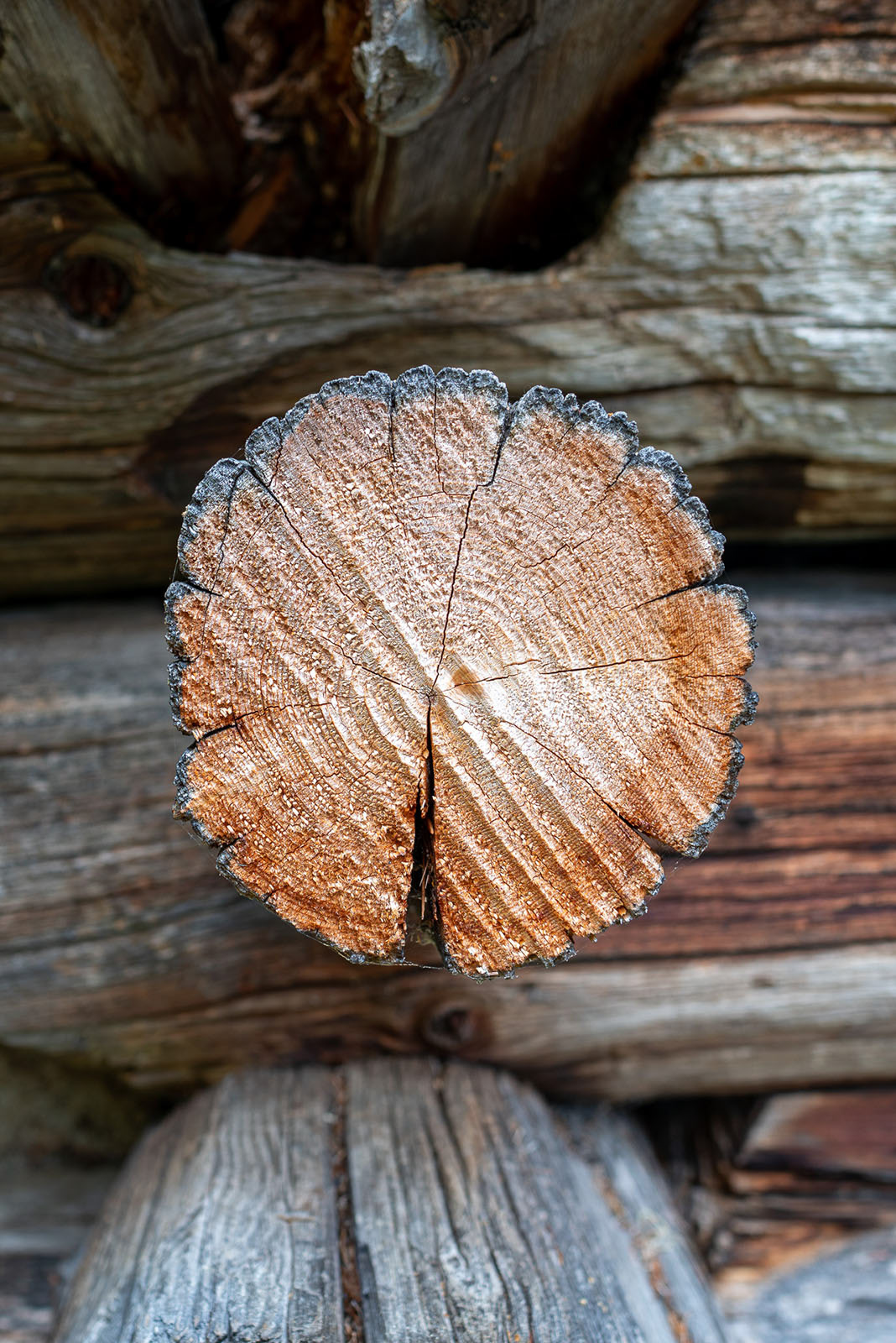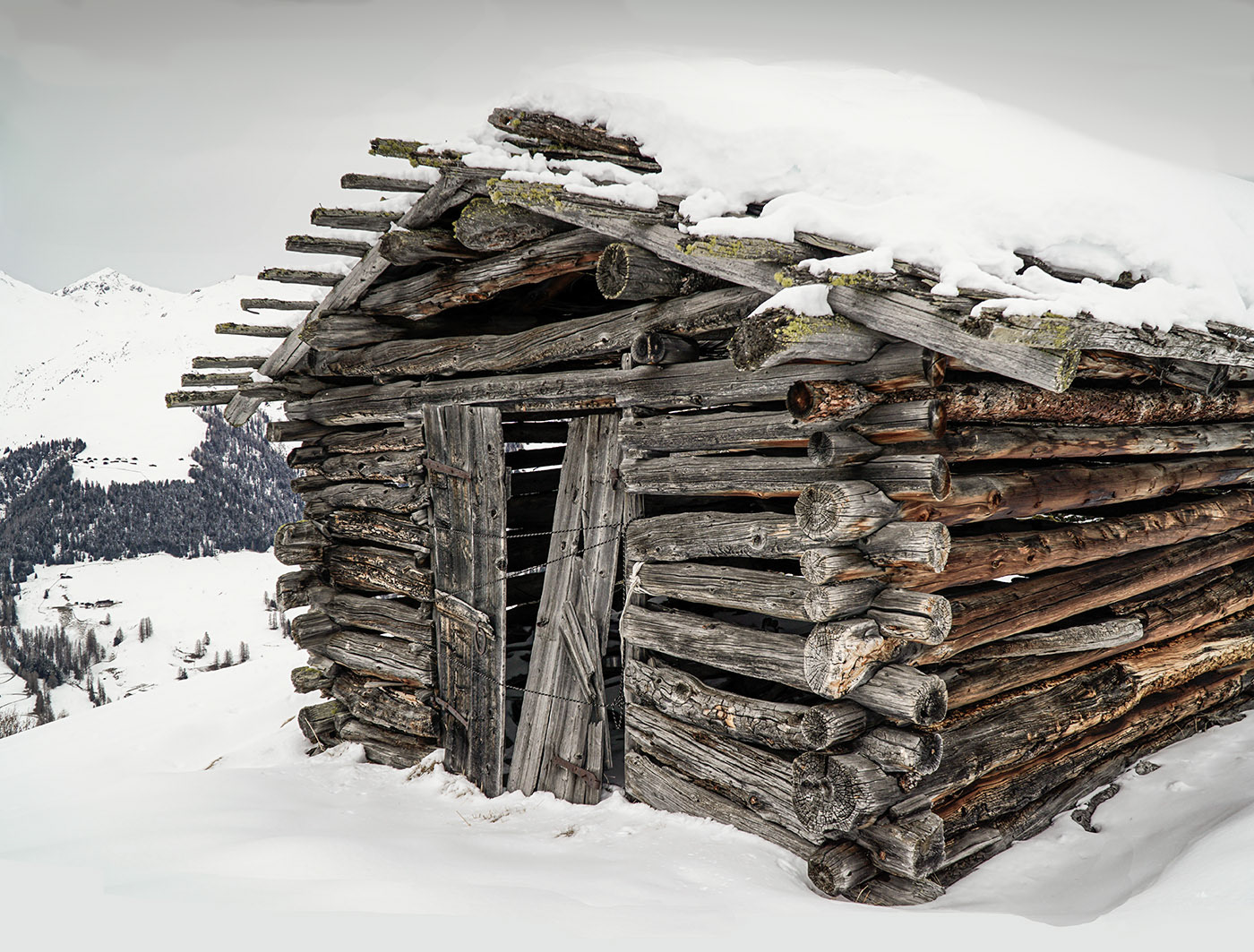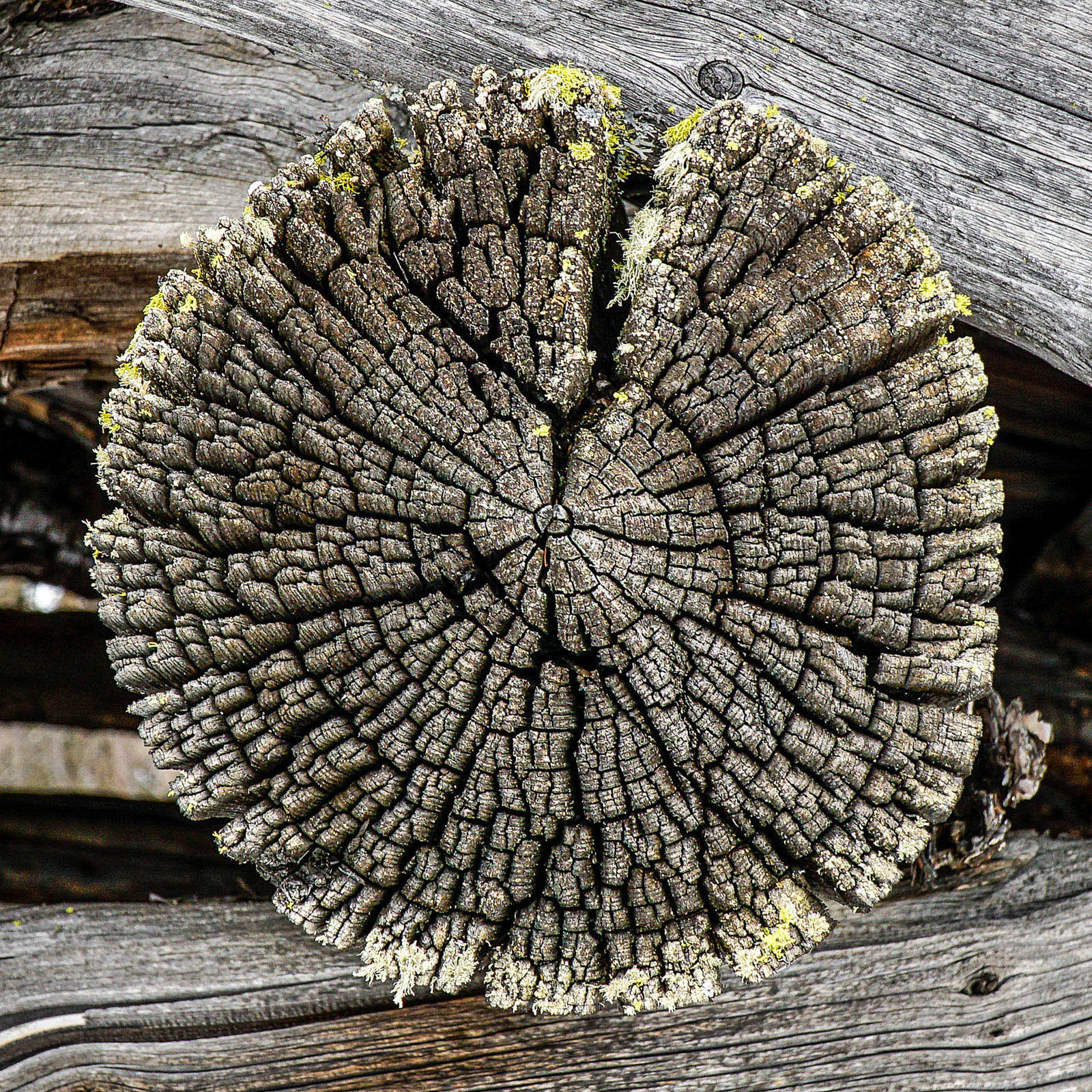T(h)ree Lives
It’s a well-known fact: A horizontal cross section cut through the trunk of a tree reveals growth rings, which can be studied by dendrochronology, the scientific method of dating the rings to the exact year they were formed. What’s more, they can provide data for dendroclimatology, the study of climate and atmospheric conditions during different periods in history.
Tree lives – three lives. For me, a Woodcut contains much more than just compressed time. The other day, I was reading the book Three Lives by the American author Gertrude Stein. The book contains three short stories, which are independent of each other, each depicting the life of a character. Slowly it began to dawn on me that a large Woodcut picture symbolizes three lives:
1st Life: The life of a healthy tree until the day when saws and axes ended this living organism’s life.
2nd Life: The tree became building material in a stacked log wall of a shed or cabin, serving a purpose. Many decades and countless hard winters later, some the sheds fell into disrepair and were given up. The second life of the wood came to an end. However, the cross-sections of the logs are still there, allowing us to gaze into the breathing of time and epochs. Hard winters, hot summers and the dry air at high altitudes have left their mark: The cross-section, which was once perfectly flat, has spread open. What is more, the wood is far from being dead, on the contrary. The weathered end pieces have developed radial cracks and fissures, allowing new forms of life to emerge in the form of moss, lichen and fungi.
3rd Life: Framed and hanging on people’s walls, the large-format Woodcuts are given a new lease of life. I call it the third life. Three lives – tree lives.
The pictures have an almost hypnotic effect. They are reminiscent of mandalas and can be seen as a metaphor of life. A figure of thought on the universal theme of becoming, being and passing away.



→ Back to INSPIRATION
